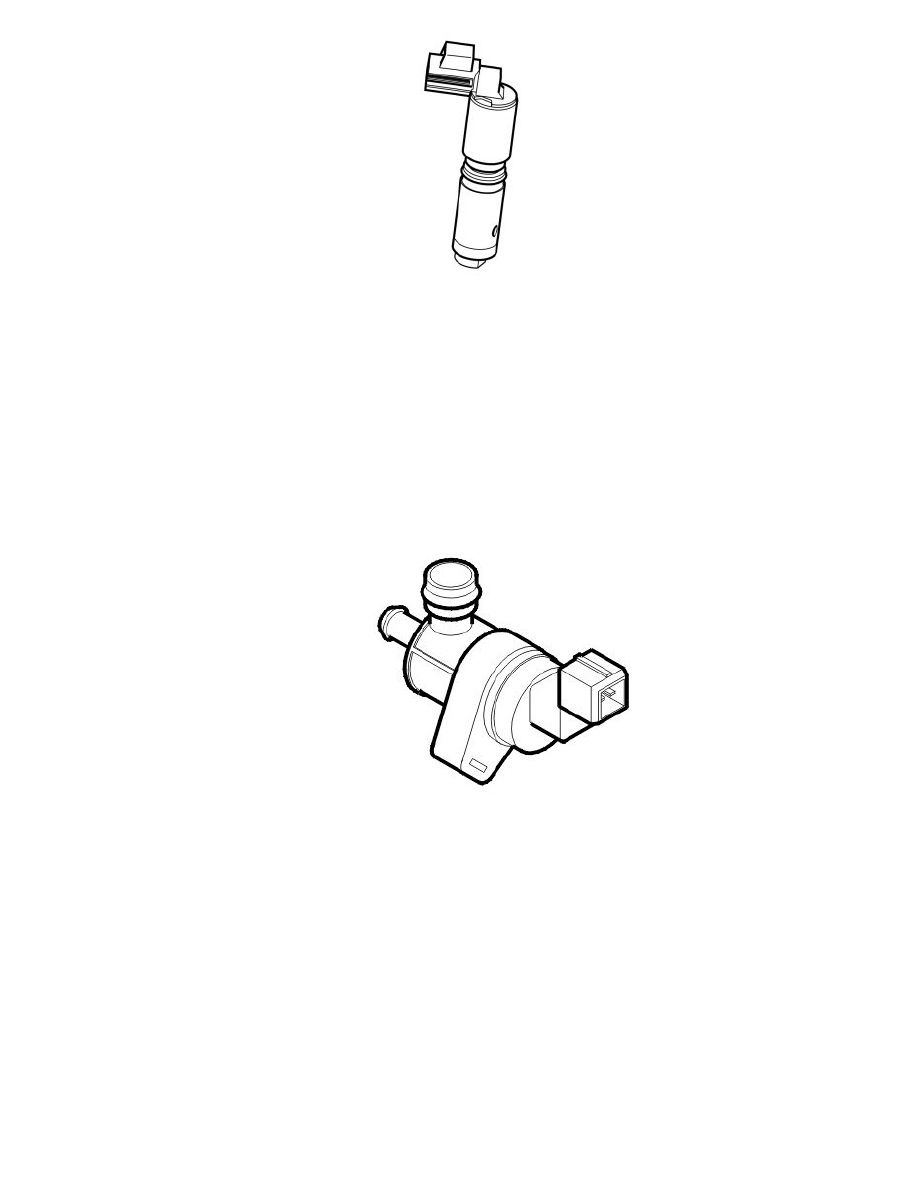XC70 AWD L6-3.2L VIN 98 B6324S (2009)

The camshaft reset valve controls the oil flow to the CVVT unit (camshaft pulley).
The valve consists of an electro-magnetic valve with a spring-loaded piston. There are slits in the piston which channel the engine lubricating oil to the
CVVT unit by moving the piston in the reset valve. The continuous variable valve timing (CVVT) unit turns the camshaft (the camshaft timing changes).
The direction in which the camshaft turns depends on the chamber in the CVVT unit which is supplied with oil (pressure). See also: Function See:
Powertrain Management/Computers and Control Systems/Description and Operation/Engine Control Module (ECM)/Function
An oil filter is mounted at the intake channel for the valves to prevent oil contaminants from affecting the function of the reset valves.
The system relay supplies the reset valve with voltage via a fuse. The valve is grounded (control stage) internally in the engine control module (ECM).
When the valve is grounded using a pulse width modulation (PWM) signal, the oil flow in the valve can be regulated to the different chambers in the
continuous variable valve timing (CVVT) unit at variable rates. This allows the angle position to be changed precisely and steplessly.
The engine control module (ECM) can diagnose the camshaft reset valve.
The valve is located on the cylinder head above the camshaft. There is a valve for intake camshaft.
There is no valve for the exhaust camshaft.
Evaporative emission system (EVAP) valve
The evaporative emission system (EVAP) valve is used to open and close the connection between the EVAP canister and the intake manifold. The valve
controls the flow of hydro-carbons (fuel vapor) from the EVAP canister to the engine intake manifold using the vacuum in the intake manifold. This
ensures that hydro-carbons stored in the EVAP canister are used in the engine combustion process.
The valve is an electromagnetic valve and is powered from the system relay. When the valve needs to be opened, it is grounded internally in the engine
control module (ECM). The evaporative emission system (EVAP) valve is closed when in the standby position (open-circuit).
When the control module requests that the EVAP canister should be drained (the hydrocarbons stored in the canister should be released into the engine),
the control module deploys the evaporative emission system (EVAP) valve by grounding it. A pulse width modulation (PWM) signal is used to ground
the valve and to control the degree to which the valve will open. In this way, the drainage of the EVAP canister is matched to the volumetric efficiency of
the EVAP canister, the engine speed (rpm) and the engine load.
The evaporative emission system (EVAP) valve can be diagnosed by the engine control module (ECM) and can be activated.
The EVAP-valve is located by the intake manifold (by the electronic throttle module) on the front of the engine.
Leak diagnostic unit
